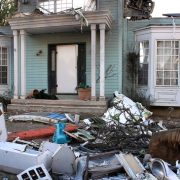Four Tips for Building an Emergency Fund
When facing life’s inevitable bumps in the road, an emergency fund is essential to maintaining financial security. Planning for emergencies is like buying insurance: you pay into an account and hope you’ll never have to use it. But life happens. Cars break down. Roofs leak. Kids get injured. Having money in the bank to cover those unexpected expenses can reduce stress and keep you from relying on credit cards and loans to make ends meet.
Here are four easy and effective ways to establish and maintain an emergency fund.
- Start small. Many financial planners advise setting aside enough money to cover at least six months of expenses. That’s a worthy goal. But for many people it’s also a daunting task, an objective that will take years – not months – to achieve. So set a realistic and achievable amount for your emergency fund, and then get in the habit of contributing regularly. Then don’t touch the account except for real emergencies. Leave it alone and it will grow.
- Pump it up. When you get a bonus, cost-of-living adjustment, tax refund, or windfall, consider using a portion of that money to bolster your emergency account. Fight the temptation to increase spending with every new dollar that comes along.
- Make it automatic. With online banking, it’s easy to set up routine transfers from your regular checking account to a separate savings account. If allowed by your employer, allocate a portion of each paycheck to an emergency fund. Consider establishing the account at a financial institution other than your regular bank. As the saying goes, “Out of sight, out of mind.” If the money never shows up in your regular checking account, you’ll be less likely to use it for everyday spending.
- Sell stuff and slash expenses. Think about selling some of your unused stuff through yard sales, online auctions, or consignment shops. This can generate cash to bolster your emergency fund. Take a hard look at your budget and consider everything fair game: expensive dinners, vacations, cable television, and so on. You may find that a surprising number of dollars can be freed up and stashed away in savings. The key, of course, is to direct those savings – immediately, if possible – away from regular spending and into your emergency account.
If you’d like more ideas for setting financial goals or building up an emergency fund, give us a call.

